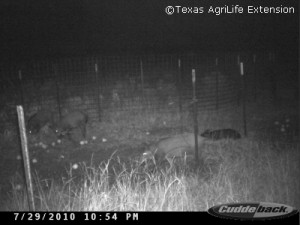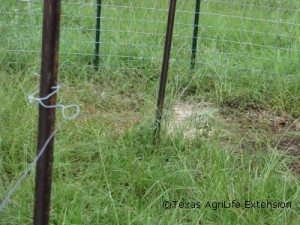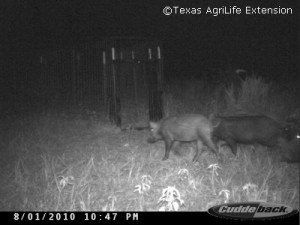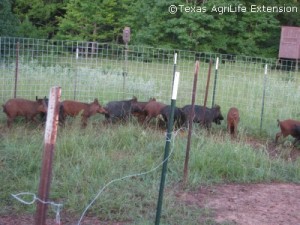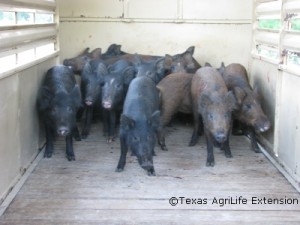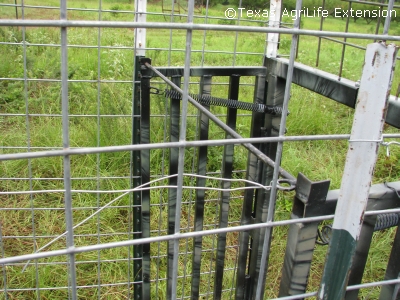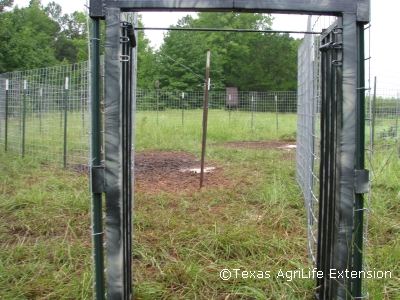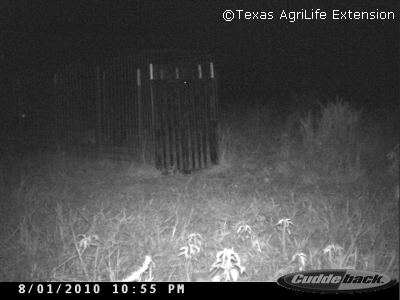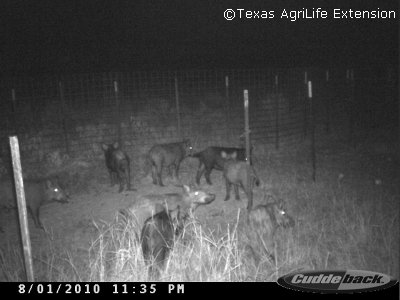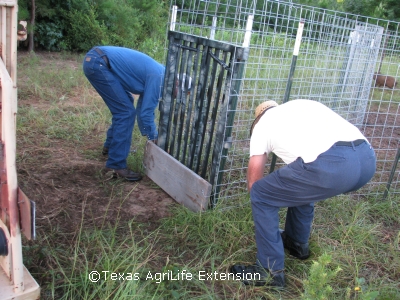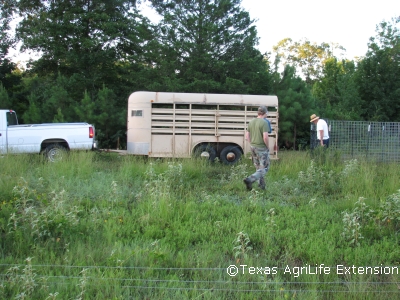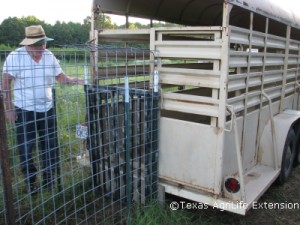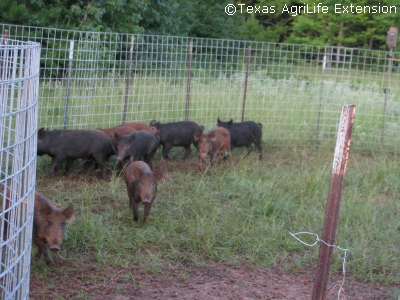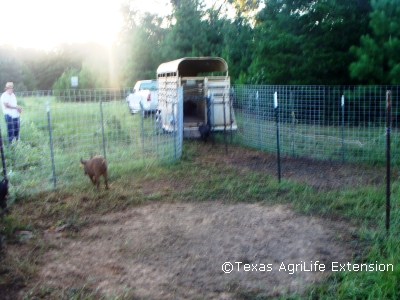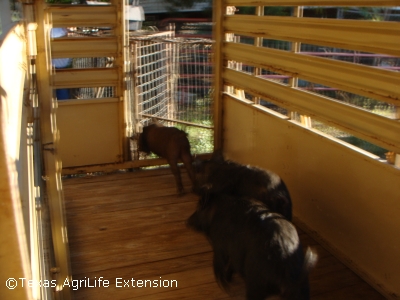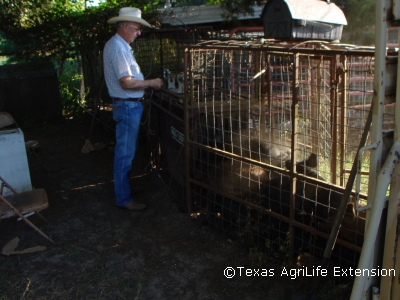“A One Way Ticket to Hog Heaven”
By July 28th, the largest sounder of hogs was hooked on the peaches placed inside the trap and were more than willing to feed all the way into the back of the trap. However, because of scheduling issues, the decision was made to delay setting the trap to catch until Sunday, August 1st, even though the hogs were “trap ready” several days before. Chumming continued while daytime temperatures soared to triple digits throughout the weekend.
The trap was re-baited on the evening of August 1st and the gate set to trip. The trip wire was run above “hog height” until it reached the next to the last t-post. From there, it was run down to about a foot off the ground at the last t-post about 8 feet from the back of the trap and secured to the back of the trap. Plenty of bait was placed around the foot high trip wire to ensure that it would be triggered while the hogs were at the very back of the trap—far from the gate. In fact, the images captured on camera revealed that the actual gate trip occurred between 10:48 pm and 10:55 pm Sunday night. A daylight check the next morning (August 2nd) revealed an even dozen hogs were captured.
It was important to get the hogs loaded and transported while it was still “cool”. Hogs left in an unshaded trap will die by late afternoon in the Texas summer heat, so once a trap is set to trip, it is imperative to check it daily, preferably at the coolest time of day.
A trailer was backed into the gate and the all important board was secured at the bottom of the gate opening to prevent escape under the trailer. With the board in place and the gate opened and secured, the hogs funneled away from humans at the back of the trap and loaded easily into the trailer. Only one person was required to work the trailer gate in order to secure the hogs once they self loaded.
With a one way ticket to hog heaven punched for travel, the hogs were transported to a buying station some 15 miles away. The landowner was paid for the hogs at the buying station based on weight, allowing him to recoup at least some of his trapping costs. From the buying station, the hogs will be transported with others to a processing facility where they will be federally inspected and processed, destined for human consumption in the U.S., Europe, or Asia.
